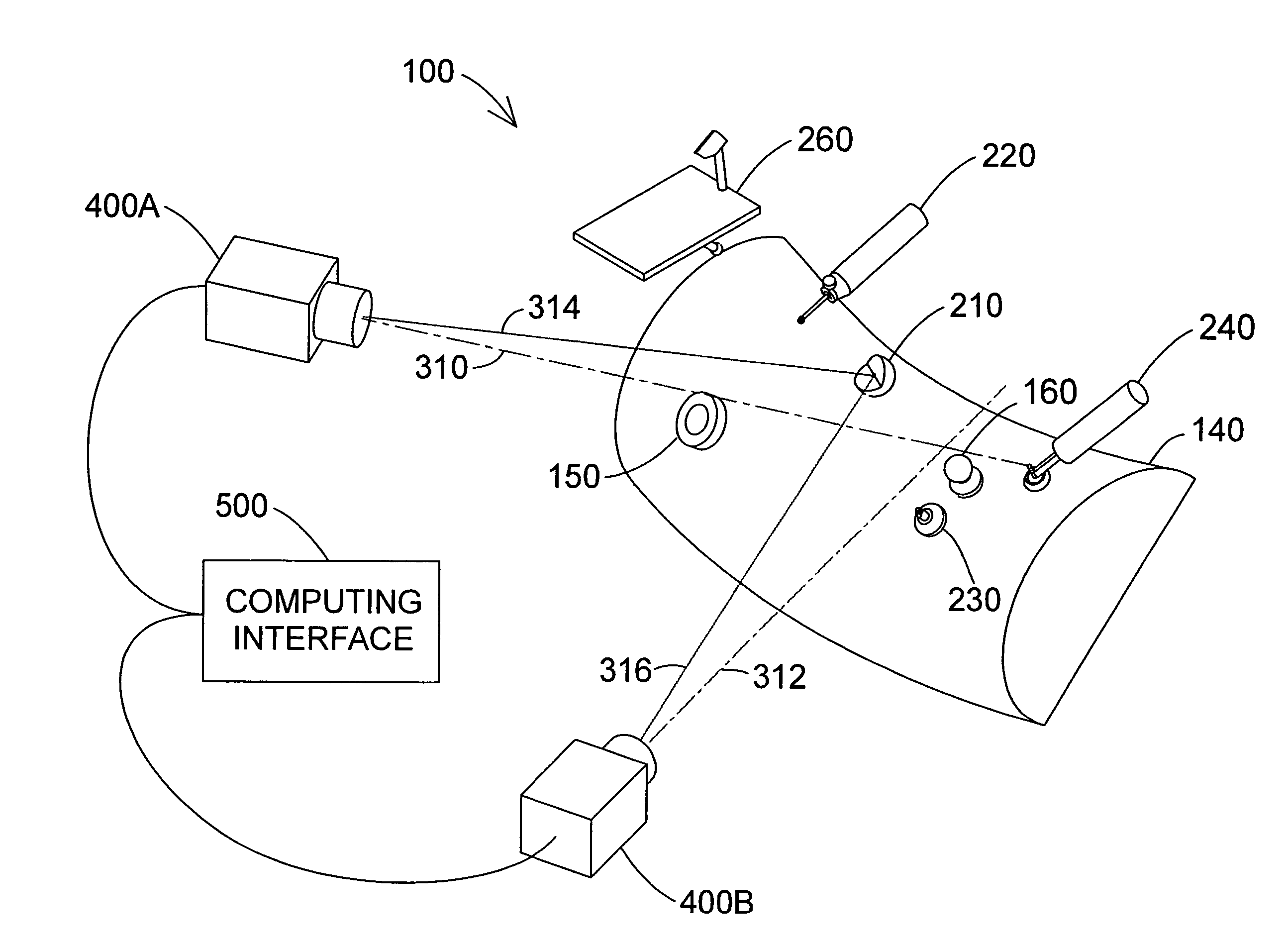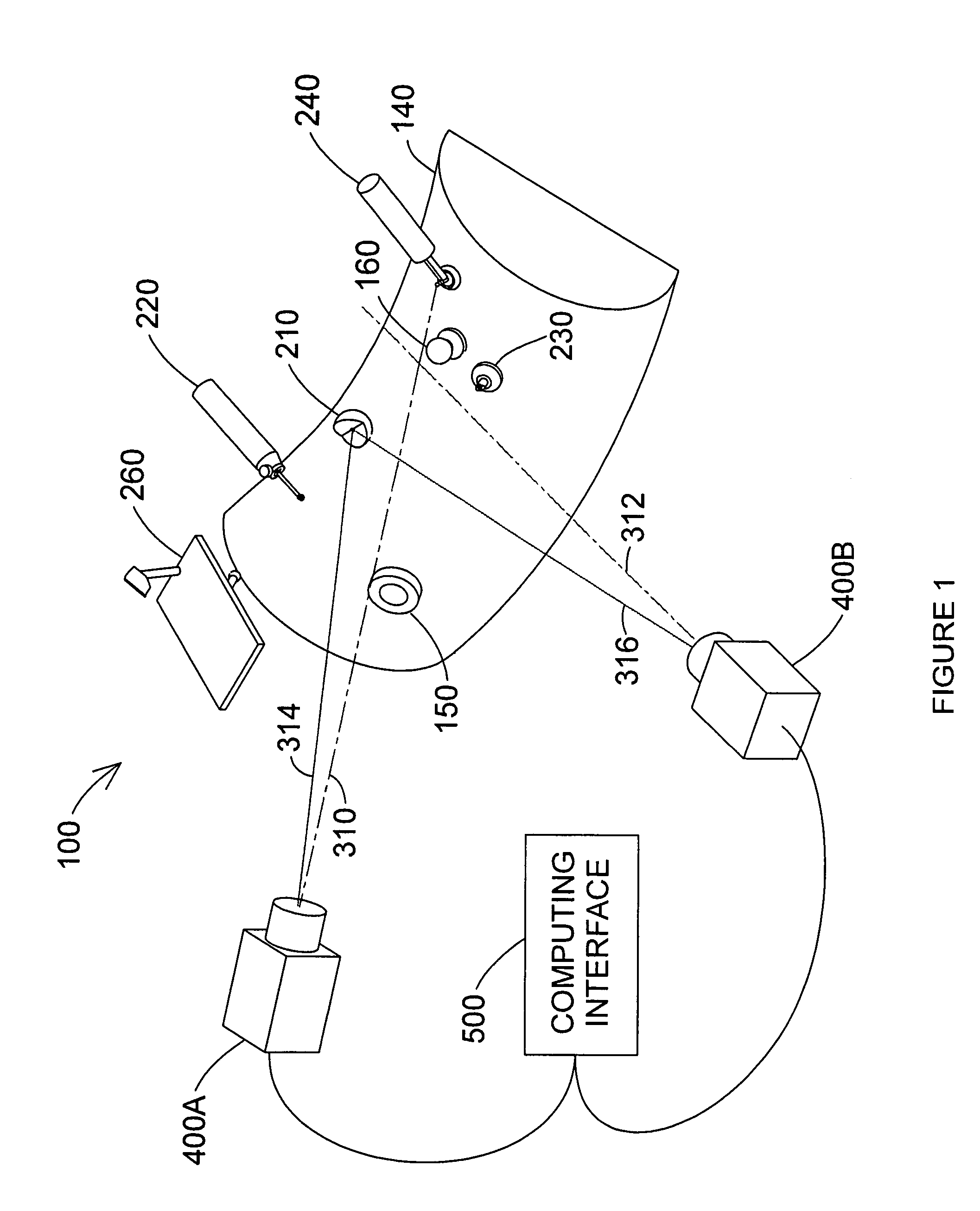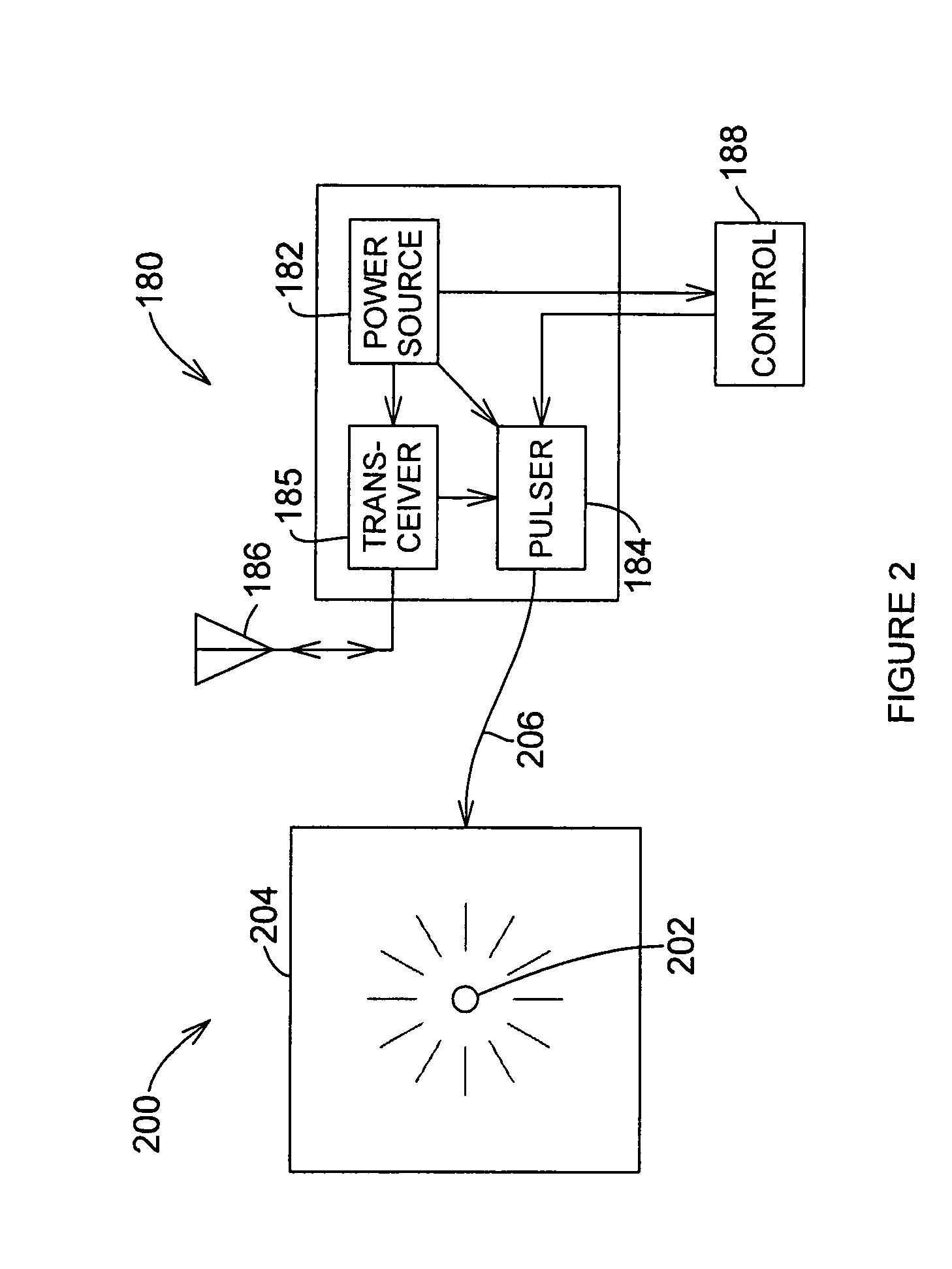Three-dimensional coordinate measuring device
a three-dimensional coordinate and measuring device technology, applied in direction/device determining electromagnetic systems, instruments, television systems, etc., can solve the problems of low accuracy of other devices, slow data collection speed to be used to efficiently determine the coordinates of three-dimensional contours, and low cost of the least expensive device, etc., to achieve convenient movement, easy movement, and rotatable
- Summary
- Abstract
- Description
- Claims
- Application Information
AI Technical Summary
Benefits of technology
Problems solved by technology
Method used
Image
Examples
fourth embodiment
[0032]emitter 200 is the wide-angle emitter 240, shown in perspective view in FIGS. 1 and 5 and in cross-sectional view through the center of the emitter in FIG. 5. Wide-angle emitter 240 comprises emitter ball 250, shaft 242, electronics cavity 244, spherical base segment 246, and optional handle 248. The intensity of light from wide-angle emitter 240 is nearly the same in all directions. Emitter ball 250 is centered on the lower surface of spherical base segment 246. In other words, the distance from the center of emitter ball 250 to the outer surface of spherical base segment 246 is equal to the radius of spherical base segment 246.
[0033]Emitter ball 250, shown in central cross section in FIG. 6(a), comprises upper transparent hemispherical shell 251, lower transparent hemispherical shell 252, and wide-angle light source 255. Upper and lower hemispherical shells 251 and 252 are joined together with index-matching cement to form hollow spherical cavity 253. Spherical cavity 253 is...
fifth embodiment
[0036]emitter 200 is the retroprobe emitter 260, shown in perspective view in FIGS. 1 and 7. Retroprobe emitter 260 comprises light source 261, baffle 262, light source support 263, mirror 264, probe shaft 265, and probe tip 266. Light beam 270 emanates from light source 261, reflects off mirror 264, and travels as light beam 271 to camera 400A. Light beam 272 emanates from light source 261, reflects off mirror264, and travels as light beam 273 to camera 400B. Probe tip 266 is located at the position of the virtual image of light source 261 formed by mirror 264. In other words, a line drawn between probe tip 266 and light source 261 bisects the reflecting surface of mirror 264 in a right angle. Baffle 262 blocks light from light source 261 from directly reaching camera 400A or 400B. The cameras therefore see the light source as emanating from point 266. This configuration is advantageous because probe tip 266 can reach points for which a light source is not visible to both cameras 4...
first embodiment
[0037]A block diagram of camera 400A, which is identical to camera 400B, is shown in FIG. 8. Camera 400A comprises imaging block 410 and electrical block 430. There are two embodiments of imaging block 410. The first embodiment is linear imaging block 800 shown in FIG. 9. Linear imaging block 800 comprises optical bandpass filter 814, beam splitter 816, first and second apertures 820A, 820B, first and second cylindrical lens assemblies 830A, 830B, and first and second linear photosensitive arrays 840A, 840B. The purpose of optical bandpass filter 814 is to eliminate background light outside the wavelength range of light source 202. This improves the signal-to-noise ratio of photosensitive array 840A, 840B. An alternative to optical bandpass filter 814 is to coat the surfaces of first and second lens assemblies 830A, 830B to filter out unwanted wavelengths.
[0038]Optical axis 310 goes through the centers of beam splitter 816, first aperture 820A, first cylindrical lens assembly 830A, ...
PUM
 Login to View More
Login to View More Abstract
Description
Claims
Application Information
 Login to View More
Login to View More - R&D
- Intellectual Property
- Life Sciences
- Materials
- Tech Scout
- Unparalleled Data Quality
- Higher Quality Content
- 60% Fewer Hallucinations
Browse by: Latest US Patents, China's latest patents, Technical Efficacy Thesaurus, Application Domain, Technology Topic, Popular Technical Reports.
© 2025 PatSnap. All rights reserved.Legal|Privacy policy|Modern Slavery Act Transparency Statement|Sitemap|About US| Contact US: help@patsnap.com



